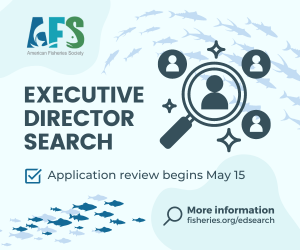March 6, 2020
The Honorable Betty McCollum
Chair
House Committee on Appropriations
Interior, Environment, and Related Agencies |
The Honorable David Joyce
Ranking Member
House Committee on Appropriations
Interior, Environment, and Related Agencies |
Dear Chair McCollum, Ranking Member Joyce, and Honorable Committee Members:
Improving the future health and sustainability of the nation’s forests, grasslands, and aquatic systems requires a strong investment in USDA Forest Service Research and Development (R&D). Offering vital benefits to forests, wildlife, and fish, the undersigned organizations and professional societies urge you to increase funding for all Forest Service R&D to a minimum of $315 million in FY 2021 including all necessary increase for the Forest Inventory and Analysis program and at least $232 million for the remaining Forest and Rangeland Research program areas.
We thank you for supporting a funding increase in FY 2020, but we are deeply concerned by the administration’s proposal to cut R&D by 25%, eliminate the wildlife and fish research program, close two research facilities, and reduce other important research activities. We urge you to reject these proposals and include report language underscoring the value of Forest Service R&D in providing foundational information and innovative solutions to improve the health of the nation’s forests, grasslands, and aquatic systems.
Notable recent Forest Service R&D contributions include:
Avoiding Endangered Species Act Listings and Saving Taxpayer Dollars
Forest Service fish and wildlife researchers are leading scientists in their fields and specialize in providing applied research to natural resource managers and decision-makers in state and federal government and the private sector. Forest Service research informs conservation efforts that have helped to avoid Endangered Species Act listings for several forest and rangeland wildlife species. For example, Forest Service scientists used molecular techniques to determine that the Arapahoe Snowfly, a species petitioned for protection, was not actually a distinct species but rather a hybrid. This type of robust science is a perfect example of researchers providing the best available science to inform management actions.
Improving Wildfire Management
Forest Service R&D initiatives are working to strengthen the link between research and wildfire suppression operations, including decision support systems to examine tradeoffs among investments in preparedness, large fire suppression costs, and hazardous fuel treatments at multiple scales. New tools will support spatial fire management planning, track and monitor fire and fire-related resources, increase efficiency, and reduce overall impacts and costs of wildfire incidents.
Guiding Drought Management Response
Drought affects local and regional economies through its effects on water resources for agriculture, ranching, and forestry operations and the supply of clean drinking water. Drought also leads to more devastating wildfires, resulting in loss of life and property, reduced economic activity, degraded wildlife habitat, and greater wildlife suppression costs. Forest Service R&D has been a leader in reviewing impacts of drought on US forests and rangelands to better manage for resiliency and adaptation. Agency drought assessments and guidance have helped federal, tribal, state, and private stakeholders devise and implement strategies to sustain healthy, resilient ecosystems.
Revolutionizing Monitoring for Invasive Species and Species at Risk
Land managers and regulatory agencies are using environmental DNA (eDNA), a non-invasive genetic sampling technique, to locate invasive species as well as rare and sensitive species in need of special management considerations. For example, water sampling can reveal Forest Service R&D has leveraged its own investments in this path-breaking technology to receive additional funding through partnerships with national forests and other agencies. Future research will continue to lower the cost and improve the efficiency of eDNA sampling, which is twice as likely as traditional sampling to detect species in low abundance at less than half the cost. Broad-scale implementation could save natural resources management agencies millions of dollars in sampling costs annually.
Creating and Expanding Markets for Forest Products
Forest Service R&D is driving innovation and working to build and expand markets for forest products. For example, work at the Forest Products Laboratory on woody biofuels, advanced composites and wood structures, and value-added wood products promotes healthy forest ecosystems and economies by creating, enhancing, and protecting markets for forest products. In partnership with universities and private industry, R&D scientists to explore and demonstrate the strength, safety, cost-effectiveness, and other benefits of building with cross-laminated timber (CLT). Further actions are needed, working on building codes and wood utilization models, to accelerate adoption of CLT and create new markets.
Valuing Urban Forests and Trees
Forest Service scientists have devised alternatives to grey infrastructure and helped communities calculate the economic, environmental, and social value of new and existing trees—including property value increases, energy savings, air pollutant uptake, and stormwater reduction. In addition, R&D research also encourages clean watersheds by analyzing the impacts of people, vegetation, and infrastructure on urban water, and supports urban watershed restoration projects that revitalize neighborhoods.
Responding to Changing Conditions
Silviculture research forms the scientific foundation for forest management and conservation. Forest Service silviculture researchers study how to regenerate forest trees and other plants, how trees grow over time, and how stands of trees interact with the environment, wildlife, diseases, and insects. R&D research creates, quantifies, and integrates knowledge about tree growth, soils, plant physiology, and genetics. The conditions of today’s forests are due, in part, to Forest Service silviculture research in the past. Future forest conditions will depend on today’s investments in silviculture research to help respond to a changing climate and other disturbances.
Balancing Fish Habitat and Resource Needs
R&D fisheries biologists are developing better approaches to managing forested landscapes that provide habitat for native salmon and trout in high elevation lakes and streams across the Rockies. Critical to developing comprehensive restoration strategies, this science has not only helped create more resilient forests but also the conditions and prey essential for healthy, native fish populations. Recent successes include innovative protocols for monitoring fish populations and habitat quality in addition to strategies for meeting growing demands for water, energy, and other forest-based commodities while ensuring the sustainability, diversity, and integrity of aquatic species.
Quantifying the Role of Forests in Providing Clean Air and Water
Research directly linking trees to clean air and water underscores the economic value and benefits trees and forests provide to all residents and communities. Recent R&D work shows that forests, which make up 26% of US land area, are the source of 46% of the US water supply. Managing forested landscapes to sustain and enhance production of low-cost, clean water supplies as well as improved air quality is critically important to human health and provides a value of nearly $7 billion every year. In particular, the recommended funding level will enable R&D to expand delivery of this science to managers of forested watersheds whose activities benefit water supply utilities in cities and towns that depends on clean surface water supplies.
Advancing forest science is integral to improving the health and welfare of US forests and citizens, increasing the competitiveness of US products in the global marketplace, and adapting to unforeseen future challenges. Respectfully, we ask you to reject the administration’s extreme and unnecessary proposal, which would result in significant gaps in the knowledge base and data sets necessary to address the many threats facing our nation’s forests and the wildlife, fish, and people that depend on them.
Sincerely,
American Fisheries Society
Society of American Foresters
The Wildlife Society








